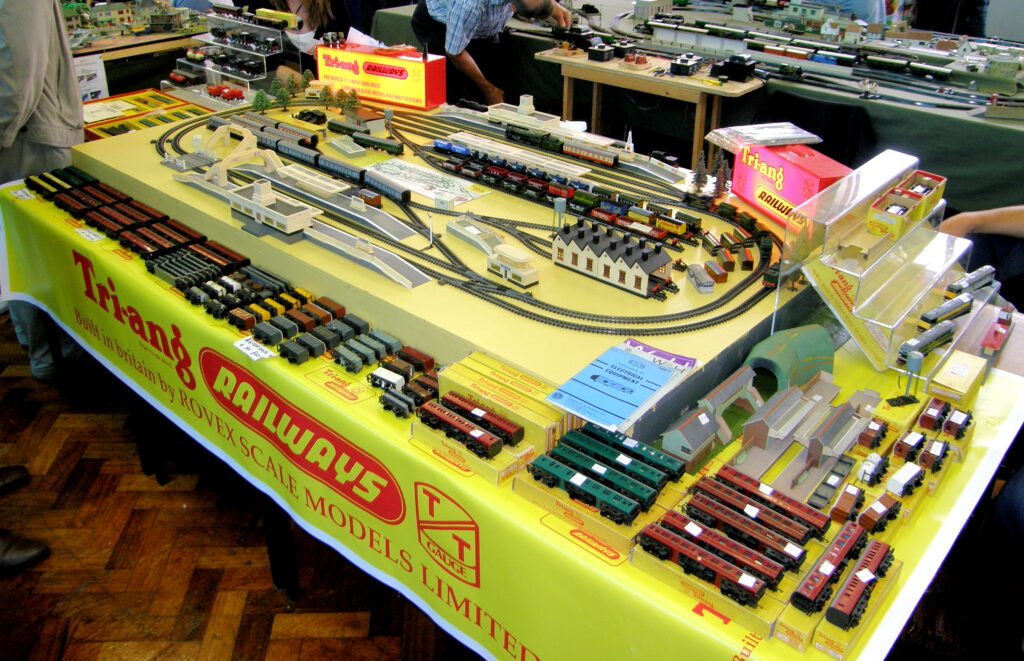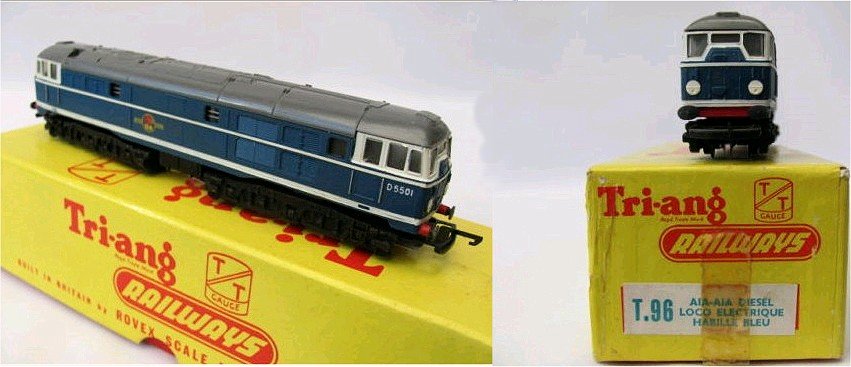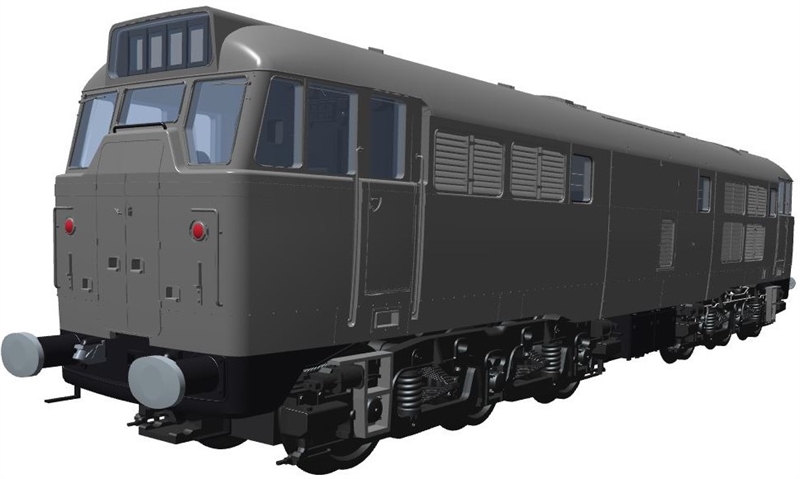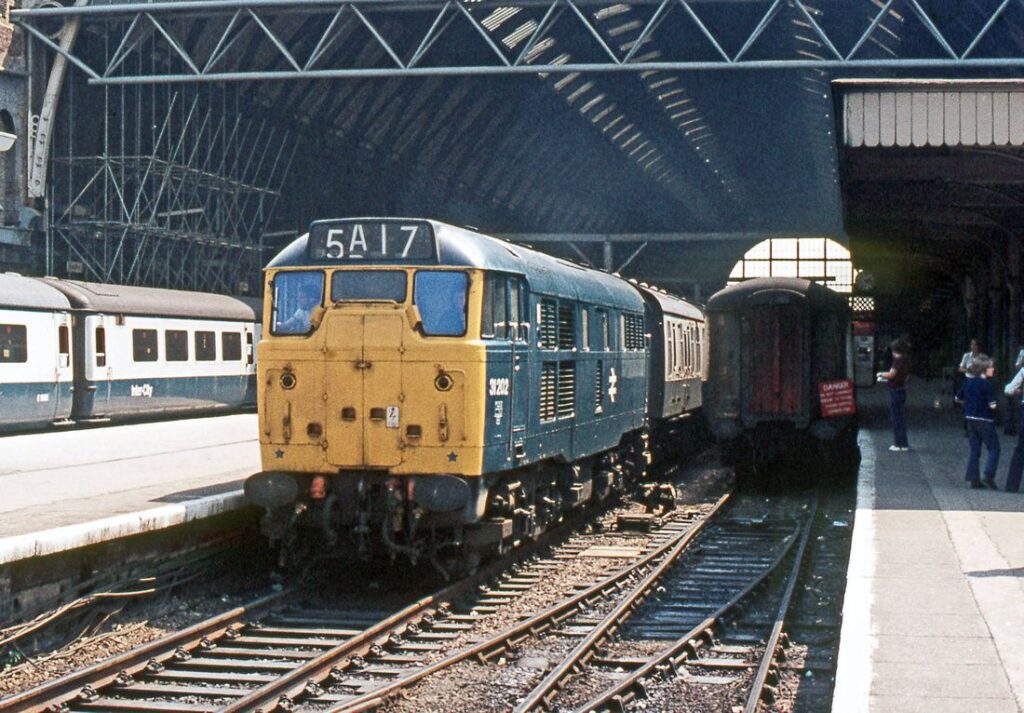It’s no surprise that the COVID lockdowns saw a huge surge of interest in home-based hobbies. Long-put-off DIY projects were completed, and lots of people enjoyed crafting, making and building. Britain’s biggest manufacturer of model railways, Hornby, has seen profits surge after a few lean years. Completely understandable, of course – building a model railway takes a lot of time and effort, and can be a really rewarding business. One of my favourite layouts on the exhibition scene – Hornsey Broadway – took no less than twelve years to build, so a head start has to be welcome!
The absolutely stunning realism of twelve years of hard work!
In an interesting development, several model railway firms have raided their increased bank balances and launched a new (for Britain) scale for model trains – TT:120. It was announced in the summer. TT stands for “Tabletop”, and the scale has existed in various forms for many years, being especially popular in Germany (notably in the former East Germany). It runs on 12mm gauge track, is 1:120 scale, and sits between N gauge (9mm tracks) and OO/HO (16.5mm). It’s a nice size – easier to handle than the very small N, while enabling a lot more to be fitted into the average house than you could manage with OO/HO. British TT was only briefly available in the fifties and sixties, when Tri-Ang marketed a modest range. These models are now popular collectors’ items, but are very crude by today’s standards.

The biggest problem with it is one which sadly afflicts most off-the-shelf British railway models. Real-life British trains are, for various historical reasons, smaller than American and continental European ones, although they run on the same tracks. This made it difficult, in the early days of small model railway scales, to squeeze motors into models of British locos. So…Tri-Ang retained the TT track gauge of 12mm, but altered the size of everything else to 1:100, making the trains slightly bigger, but making the track too narrow. HO gauge, 1:87 scale, had previously morphed into British OO, at 1:76 with the same track, and British N has a similar discrepancy. Most modellers live with this, because fixing the problem is complicated and expensive. Some are dedicated enough to do it, though – some OO modellers hand-build 18mm track and replace all the wheels on their models. This is absolutely not a job for the faint-hearted, but it makes a big difference to the way things look.
Anyway – excuse the history lesson. The big development here is that the new British TT models will be made to 1:120 scale throughout, meaning that for the first time in many decades, you’ll be able to buy British model trains where the bodywork and track gauge are BOTH highly accurate and actually match. This is very exciting!
The first ready-to-run locomotive to be released in TT:120 is the British Rail Class 31 diesel. It’s due to appear next year, and is going to be made by Danish manufacturer Heljan. It’s a very good choice for a first release – lots of class 31s were built, they had a long service life, and operated on large parts of the UK rail network. This means lots of modellers will be happy to buy them. There’s also a nice historical connection – Tri-Ang made a class 31 in their 1960s TT range.



Hopefully other popular classes will follow, but I do think TT: 120 early adopters are taking bit of a risk. New releases will only follow if sales are strong, but if they’re not, you’ll have a very limited choice of what you can run, and it might all end up getting discontinued. Also, the design choices made for TT:120 make it incompatible with its predecessors, so there is no secondhand market. New model railway equipment is very expensive these days, but in established scales, especially OO, there’s a huge choice of pre-owned models. Running old and new trains together in most scales can present a few compatibility problems, but a few minor alterations can usually fix these. That access to a wide range of cheaper models won’t exist, at least not for a few years yet.
I had a OO layout in my youth, and always enjoyed it, although I eventually lost interest. I’d love a layout again in future, and given that I’ll be starting from scratch, TT:120 looks very tempting. I’ll certainly be watching how the UK range develops – I think it’s in everyone’s interest to see it grow, so I hope the bravery of manufacturers in bringing it back is matched by the bravery of modellers in supporting it.
Technical note: this post was largely written by hand using a Remarkable 2 tablet, converted to text using the handwriting recognition on the device. It worked pretty well! I’ll give the device a review here soon.
1 thought on “A story of scale and gauge”